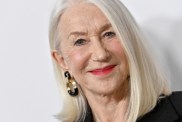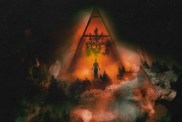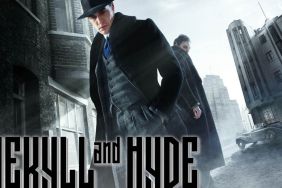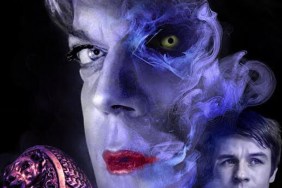
A appreciation of a Hammer Horror classic.
It is I who exists, Dr. Jekyll, not you!
Roy Ward Bakers 1971 Hammer film, DR. JEKYLL AND SISTER HYDE, is easily one of the most unique and entertaining adaptions of Robert Louis Stevenson novella, The Strange Case of Dr. Jekyll and Mr. Hyde. A film that not only offers its viewers a fresh perspective on an age old tale, but is at the same time, a good, if not somewhat sleazy look at mans desire to play God as well as a hefty amount of not so subtle sexuality.
Starring Ralph Bates (TASTE THE BLOOD OF DRACULA, LUST FOR A VAMPIRE) as the infamous Dr. Jekyll, the film spends its first quarter following its protagonists attempts at creating an elixir of life, a form of medicine which would allow for its takers to live longer. We see that Jekyll is a man on a mission with his continuous attempts, caring not about leading any normal social life or even sleeping, but has his eyes set on playing God, something that we as filmgoers all know never leads to anything positive. By mistake, Jekyll comes across the discovery that certain female hormones allow for a transformation of the elixirs partaker, a discovery that ends up being more of a curse than a blessing to the doctor. While that revelation is more than enough to grab your attention, the film also injects the story of Jack the Rippers Whitechapel Murders and the grave-robbing characters of Burke and Hare into the mix, putting a very different spin on things.

When we get to the films first transformation, we dont see the young doctor turn into a raging monster, instead he becomes a female version of himself (our Hyde portrayed by the stunning Martine Beswick), a spin that leads the film into many different ideas and themes, a lot of which werent typically addressed in the early 70s. Looking at himself in his mirror for the first as a female, the scientific facts and mission of Jekylls isnt in the foreground anymore. Instead, the young doctor, now a beautiful woman, begins to explore her new body for the first time. Its an interesting scene, one that causes you to ask yourself for the first time (and definitely not the last) if the pre-elixir doctor has felt a sense of body dysmorphia prior to his transformation into Hyde. The fondling of her own breasts, the seductiveness of the character, its all front and center with Hyde.
Needing to have access to a continuous supply of female hormones, Jekyll enlists Burke and Hare to sell him female cadavers to assist in his need of female hormones, but when the early twist comes in the form of both Burke AND Hare getting killed by a town mob, Jekyll realizes that he must go out and kill women himself. Showing us again, that the Hyde character is the more dominant of the two, Jekyll takes his serum and becomes Hyde again and again, each time roaming the Whitechapel streets, murdering prostitutes left and right in order to use their bodies as ways to extract hormones.

The film has such a solid setup, with Jekyll questioning himself and his desires, all while dodging advances from a beautiful neighbor as well as fending off advances towards Hyde from said neighbors brother. During its second half, Jekylls world slowly comes crashing down, as the battle within himself rages on, getting increasingly harder to fight off Hydes growing dominance, something that goes back to the body dysmorphia issues mentioned above. Its only when Jekyll becomes Hyde that hes most comfortable, seductive and in control. The tormented Jekyll becomes a headstrong, beautiful and controlling figure in Hyde, something that really shows that its only during these times in the film that the character is most comfortable. Its interesting to see such issues be addressed in a film from 1971, but its refreshing to see that even back then, and even in an attempted play at undertones, that the idea of not being comfortable in ones body is something that were able to see be a major plot-point. Bates does an excellent job at playing the well-meaning but unfortunately uncomfortable Jekyll, but the real star of the film is Beswick as Mrs Hyde (Jekyll explains to his neighbors that Hyde is his sister and a widowed one at that). Beswick commands every scene shes in, giving her best allure and seduction possible, making the films scenes in which she roams the White Chapel area for potential victims that much more effective. With her gorgeous red dress and having a long letter-opener as a weapon, Hyde claims victim after victim, soon making things very hard for the young doctor and gaining leverage on her alter ego.

A scene towards the films second half really puts things into perspective when Hyde proclaims that shes always been the dominant one of the two, showing us that even long before Jekyll developed the elixir, he struggled with who he was and who he wanted to be. The unfortunate issue though, lies within just that. The LGBTQ community has seldom been represented in films as anything other than the sassy best friend or the psycho killer, DR JEKYLL AND SISTER HYDE unfortunately does nothing to change that. Its the female Hyde that is the murderer of the two personalities, and it almost makes it feel like those who arent comfortable in their own bodies are wrong, instead of embracing those types of people. Its an interesting concept, the film, and though its pretty damned entertaining, the film could be something of an awkward viewing for any viewers who arent quite sure where they stand in life and who they are as people. If you can look past that, youve got something of a unique film, one that decades before Showtimes Penny Dreadful brings multiple stories and characters into a single tale of murder, science and a hefty amount of body dysmorphia. Its a Hammer film that you dont hear mentioned a lot in conversations regarding the legendary British film studio, but it’s an important one









